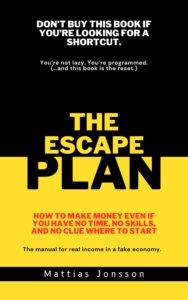Ever stepped off a plane, opened your laptop in a hip café, and realized you can’t remember what city you were in last Tuesday?
I have—and it freaked me out. Seven years into the nomad game, I’d racked up more visa stamps than connections, more airport naps than REM sleep.
Somewhere between the midnight bus to Chiang Mai and the 5 a.m. flight to Osaka, I started wondering if the freedom I bragged about was just frantic motion in disguise.
That’s when “slowmad” living—staying in one place for months instead of days—crashed my inbox, my social feeds, and eventually my lifestyle. I tried it, and I’m not going back. Here’s why more of us are hitting the brakes.
What slowmad living actually means
Slowmad life is simple on paper: you pick a spot and linger.
Instead of blitzing through thirty countries a year, you rent an apartment for a quarter, learn your neighbor’s dog’s name, and maybe even sign up for the local co-working trivia night.
It’s the antidote to that “If it’s Tuesday, this must be Belgium” syndrome.
And the movement is scaling fast. Recent estimates put the global digital-nomad population north of 40 million—a figure that’s grown 147 percent since 2019.
With that many of us roaming, the novelty of constant motion wears thin. The conversation is shifting from “How many stamps can I cram into my passport?” to “How deep can I actually live where I land?”
My breaking point with fast travel
Two years ago, I landed in Da Nang, Vietnam, exhausted after a three-country week.
My first morning there I opened Google Maps to find breakfast and realized I still had it set to Bangkok.
My next thought: If I’m so free, why do I feel lost even standing still?
So I gambled on a three-month lease. I bought a used bike, found a butcher who remembered my name, and discovered I work better when the barista knows my “the usual.”
For the first time since ditching corporate marketing, my days felt like a life, not a layover.
The hidden upsides of going slow
Deeper community. Stick around long enough and you’re not just another Airbnb guest; you’re the neighbor who helps carry groceries upstairs. That tiny shift changes everything—from your social circle to your mental health.
Real productivity. Fast travel is a thief of focus. Unreliable Wi-Fi, jet lag, and the mental bandwidth of constant logistics add up. A longer stay means stable routines, better sleep, and, in my case, a 20 percent bump in billable hours (yeah, I tracked it).
Financial wins. Long-term rentals are cheaper per night, and you’re not burning cash on transit every other week. My cost of living in Bali dropped by roughly a third once I stopped hopping islands.
Sustainability cred. Fewer flights mean a smaller carbon footprint. Slow travel is now listed among key trends in sustainable tourism, praised for its lower environmental impact and deeper local engagement.
Well-being boost. Studies on slow travel show stronger cultural immersion, reduced stress, and higher life satisfaction for those who take time to absorb a place. Translation: you actually remember the trip—and the people remember you.
But what about the downsides?
Let’s be real—slowmad life isn’t all matcha lattes and rooftop sunsets.
Restlessness. If novelty is your caffeine, staying put can feel like quitting cold turkey. I beat the itch by planning short weekend trips rather than full-blown relocations.
Visa puzzles. Some countries still chain digital nomads to 30-day tourist stamps. You’ll need to master visa runs or target the growing list of destinations with three-to-12-month remote-work permits.
Lonely good-byes. Slowing down means you actually get attached. Saying farewell hurts more when you know everyone’s birthday, not just their Instagram handle.
How to transition without losing your mind
I’ve mentioned this before but I swear by a “test month.” Pick a city you already like, commit to 30 days, and treat it like a living prototype:
-
Choose the right base. Strong Wi-Fi, walkable neighborhoods, and a time zone that doesn’t wreck your client calls. For me, Kyoto in spring checked every box.
-
Set micro-routines. Same grocery day, same workout window. Structure keeps adventure from devouring your calendar.
-
Learn something local. Volunteer, take a cooking class, or join a language exchange. Embedded learning deepens your stay and expands your circle.
-
Track your metrics. Measure cost, productivity, and mood weekly. Data turns “I feel better” into proof you can trust.
After the test month, extend to three. By then you’ll know if slowing down sparks joy or just FOMO.
Is slowmad living right for you?
Ask yourself:
-
Do I crave depth over variety?
-
Am I tired of planning life around flight deals?
-
Would mastering the art of saying “See you tomorrow” beat another game of airport musical chairs?
If you answered “yes” more than “no,” you’re already halfway to slowmad status. If the idea scares you, remember: worst case, you pack up and speed back out. Best case, you find a version of freedom that doesn’t leave you drained.
Final thoughts
Mark Twain quipped that travel is fatal to prejudice. I’d add that slow travel is fatal to burnout.
By trading motion for meaning, I rebuilt my health, my bank account, and—corny as it sounds—my sense of belonging.
So next time you refresh Skyscanner, maybe close the tab and look around. That city you’re in right now? It might be the destination you’ve been chasing from the start.

